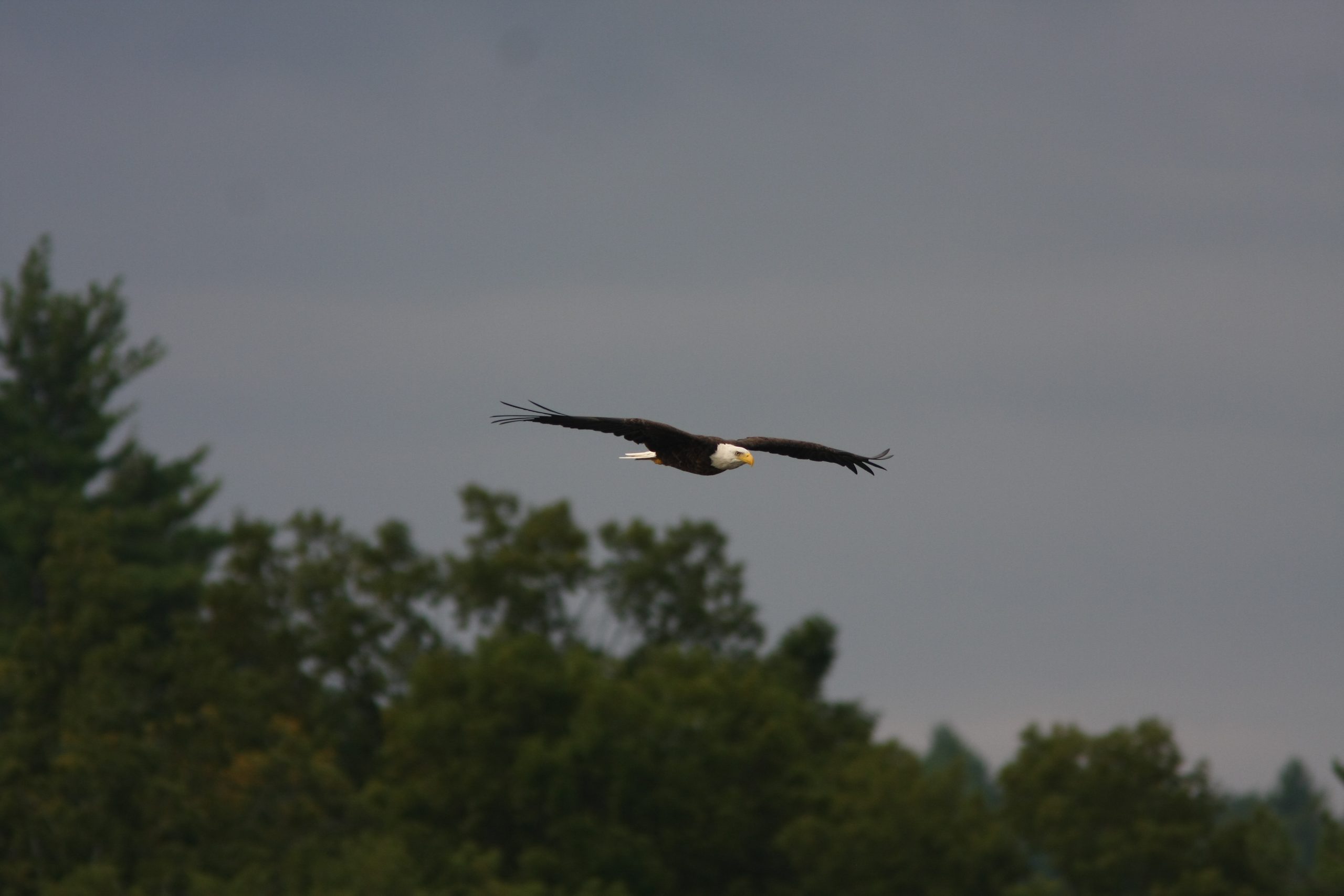In the winter months, our region becomes a temporary home to hundreds of bald eagles. Arriving in December from Canada and upstate New York, the eagles come in search of open water to fish, and large stands of trees in which to perch and roost. The clean waters and protected lands of the Upper Delaware River provide the perfect winter habitat for these magnificent birds, and eagle-viewing has become a popular winter activity.
Although guided Delaware Highlands Conservancy Eagle Watch bus tours are cancelled for January and February 2021 due to COVID-19, visit www.DelawareHighlands.org/eagles for information on viewing eagles safely on your own and to download a map to take your own driving tour and look for eagles. Follow the Conservancy on Facebook and Instagram for our virtual Eagle Watch content, with photos, videos, and updates on the eagles in our region through the winter season.
Please be aware that if you take your own driving tour, eagle viewing blinds and restrooms may not be open. If the blind is open, please wear a mask, practice social distancing, and limit the number of people inside at one time.
Remember to practice ‘eagle etiquette’ to ensure you do not disturb the birds. Avoid loud noises such as yelling, car door slamming, horn honking, and unnecessary movement. Use binoculars instead of trying to get closer, and don’t do anything to try to make the eagle fly. If the viewing blind is closed, remain inside your vehicle to avoid disturbing the birds, and park only in designated public parking areas. Practicing eagle etiquette ensures that the eagles are able to conserve the precious energy they need to survive the cold winter months.
To identify eagles, look for their massive wing span of 6-7 feet. They are a deep brown and their heads and tails are either pure white or mottled with white if they are still juvenile. When they soar, their wings are held nearly flat, compared to the V-formation of a turkey vulture or the angled wing of an osprey.
The Upper Delaware River region is one of the largest wintering habitats for eagles in the northeast United States. Being respectful, aware, and cautious when watching wildlife means we can continue to experience the joy and satisfaction we get from seeing eagles soar above our rivers and forests.
Learn more about the Conservancy’s work and what you can do to protect nature at www.DelawareHighlands.org.
Bethany Zarnowski is the Communications and Development Manager for the Delaware Highlands Conservancy. Founded in 1994, the Conservancy has protected more than 18,000 acres of working farms and forests, clean waters, and wildlife habitat throughout the Upper Delaware River region and coordinates educational events and community programs throughout the year. For more information, visit www.DelawareHighlands.org, call 570-226-3164 or 845-583-1010, or email info@delawarehighlands.org.


